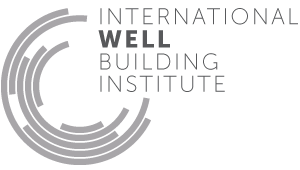Building health policy
- 84 Health and wellness awareness
- 85 Integrative design
- 86 Post-occupancy surveys
- 87 Beauty and design I
- 88 Biophilia I - qualitative
- 89 Adaptable spaces
- 90 Healthy sleep policy
- 91 Business travel
- 92 Building health policy
- 93 Workplace family support
- 94 Self-monitoring
- 95 Stress and addiction treatment
- 96 Altruism
- 97 Material transparency
- 98 Organizational transparency
- 99 Beauty and design II
- 100 Biophilia II - quantitative
- 101 Innovation feature I
- 102 Innovation feature II
- P5 Health through housing equity
- P6 Education space provisions
92. Building health policy
Protecting employee health is of the utmost importance since it impacts various aspects of work including productivity, concentration and even the health of coworkers. Employees often feel overwhelmed and unable to take appropriate rest or time away from work to recover. Workplace health policies can help support employees’ physical and mental well-being, make adopting and maintaining healthy behaviors easier and create and foster a company culture promoting good health.
This feature provides support to improve the overall health and satisfaction of workers and their families.
Employers provide at least three of the following to employees:
School policy requires that one of the following immunization schedules are fulfilled for enrollment in early education, elementary, middle, and high schools, for the age group appropriate for the school:

Applicability Matrix
| Core & Shell | New & Existing Buildings | New & Existing Interiors | |
|---|---|---|---|
| Part 1: Health Benefits | - | O | O |
| Part 2: Community Immunity | - | - | - |
| Commercial Kitchen | Education | Multifamily Residential | Restaurant | Retail | |
|---|---|---|---|---|---|
| Part 1: Health Benefits | - | O | - | O | O |
| Part 2: Community Immunity | - | O | - | - | - |
Verification Methods Matrix
| Letters of Assurance | Annotated Documents | On-Site Checks | |
|---|---|---|---|
| Part 1: Health Benefits | Policy Document | ||
| Part 2: Community Immunity | Policy Document |
| 92.1.e |
National Partnership for Women and Families' Paid Sick Days: Good for Business, Good for Workers notes that "when sick workers are able to stay home, the spread of disease slows and workplaces are both healthier and more productive." |
| 92.1.d |
The National Business Group on Health's Vaccinating Against the Flu: A Business Case notes to consider offering opportunities for employees to get vaccinated against the flu on-site. |
| 92.2.b |
The WHO Summary Table provides recomendations for child vaccination schedules. |
| 92.2.a |
The CDC provides recommendations on immunizations by age. |
| 92.1.b |
A 2010 NCHS Data Brief reports that according to the National Health Interview Survey, for privately insured adults, having a flexible spending account or health savings account was associated with increase health care utilization for some services. |
| 92.1.c |
A 2010 NCHS Data Brief reports that according to the National Health Interview Survey, adults with private health insurance without a health savings account were more likely to have unmet medical needs compared to those with health savings accounts. |
| 92.1.a |
A report from the National Center for Health Statistics found that, based on responses from the National Health Interview Survey, an estimated 45.5 million people in the US were uninsured, including 18.5% of respondents who had employment. |
